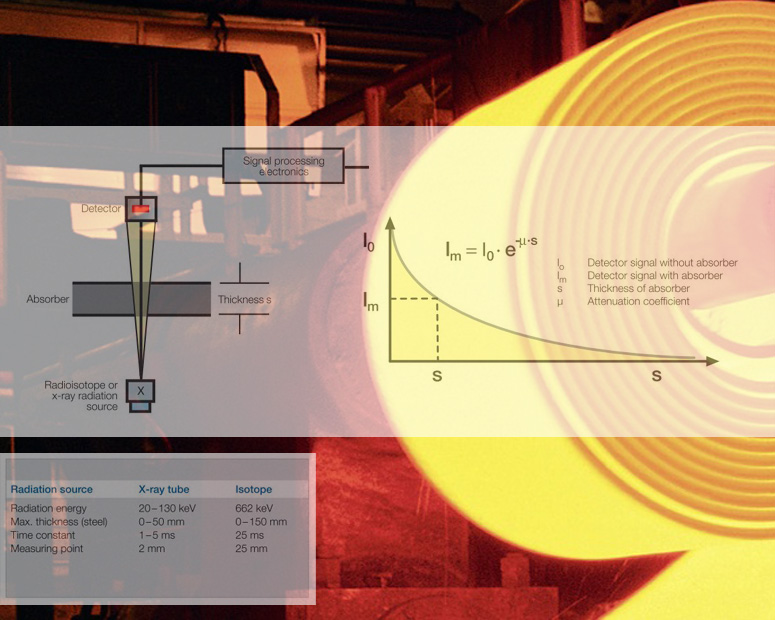(High Voltage in Focus, NLQ4/16) The deviation from the nominal thickness can be determined by means of a thickness measuring method in the industrial production of continuous strip products and can be correspondingly sorted out and adjusted. The main objective is not the discovery, but the avoidance of errors. In particular, non-contact and non-destructive processes play an important role in production and material testing ...
In addition to tactile and optical methods, the methods of radiometric thickness measurement have proven themselves particularly in the production of metal strips (coils). Due to the high measuring accuracy and sampling rate, they are suitable for a wide range of applications and industries in quality testing, automation and process optimization in the metal industry.
A distinction is made between measurement methods using radioactive isotopes (for gamma radiation) or X-ray sources (for x-radiation). While the X-rays are generated within the electron shell, gamma-radiation appears in the atomic nucleus. The advantage of X-ray radiation is the much lower signal noise and the possibility of being switched off during production breaks. The disadvantage is that it does not provide any reliable measuring results at larger thicknesses. Usually both measuring methods are used during processing, isotope emitters for the rough stuff and x-ray emitters for the fine work.
In both measuring methods, the ionizing radiation generated in the source is sent perpendicularly through the passing metal strip to the opposing detector whereby some of the radiation being absorbed. The reduced radiation arriving at the detector provides information about the thickness of the strip to be measured (absorber). The intensity of the transmitted radiation is inversely proportional to the thickness and density of the absorbing material. The radiating X-ray energy can be adjusted depending on the material type and thickness. The reduced radiation intensity is determined by means of a calibration curve stored for each material to be measured.
Since the generation of ionizing radiation always has something to do with high acceleration voltages, it goes without saying that GES is also present in this field of application. You can read more about a corresponding development project of GES here ...


